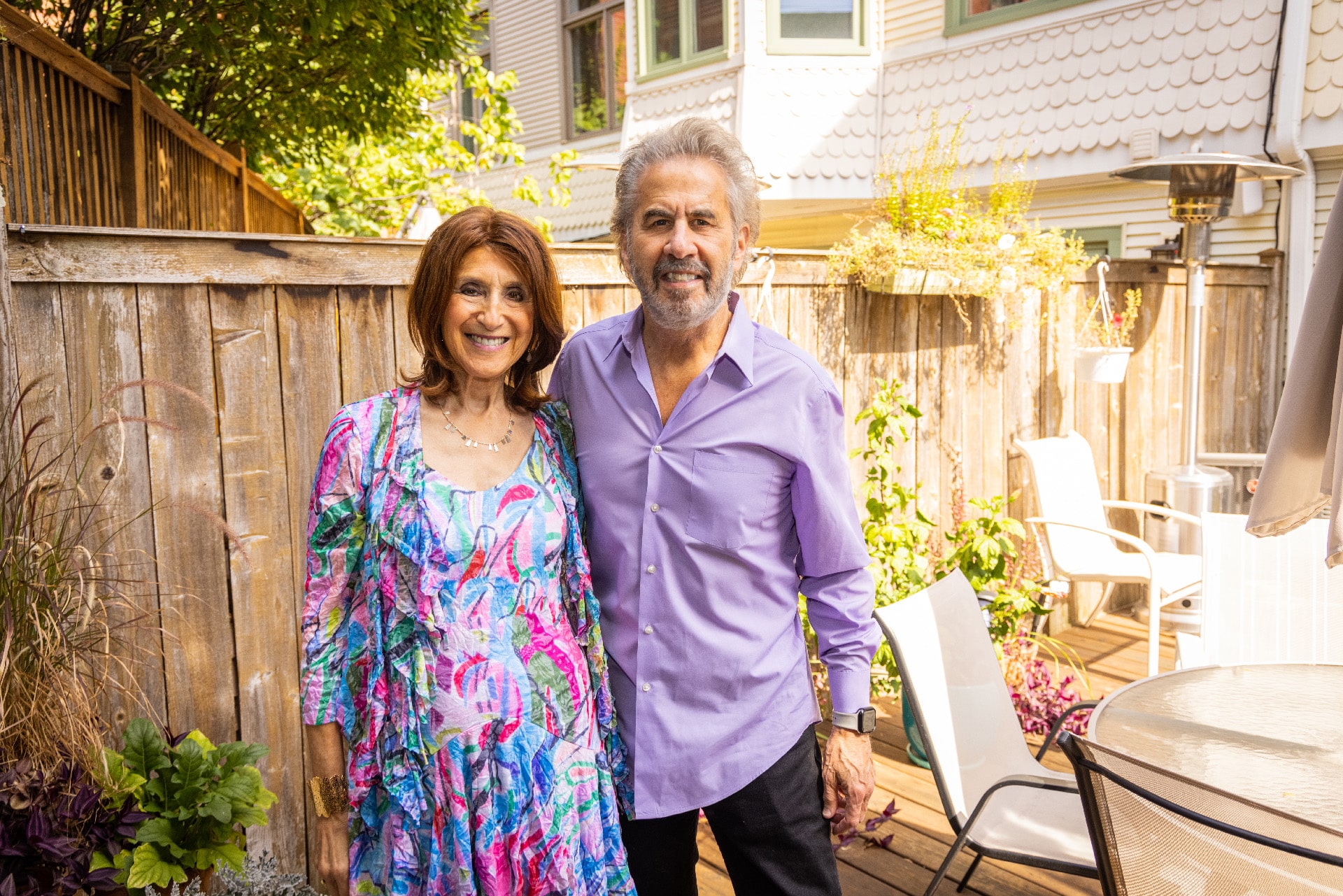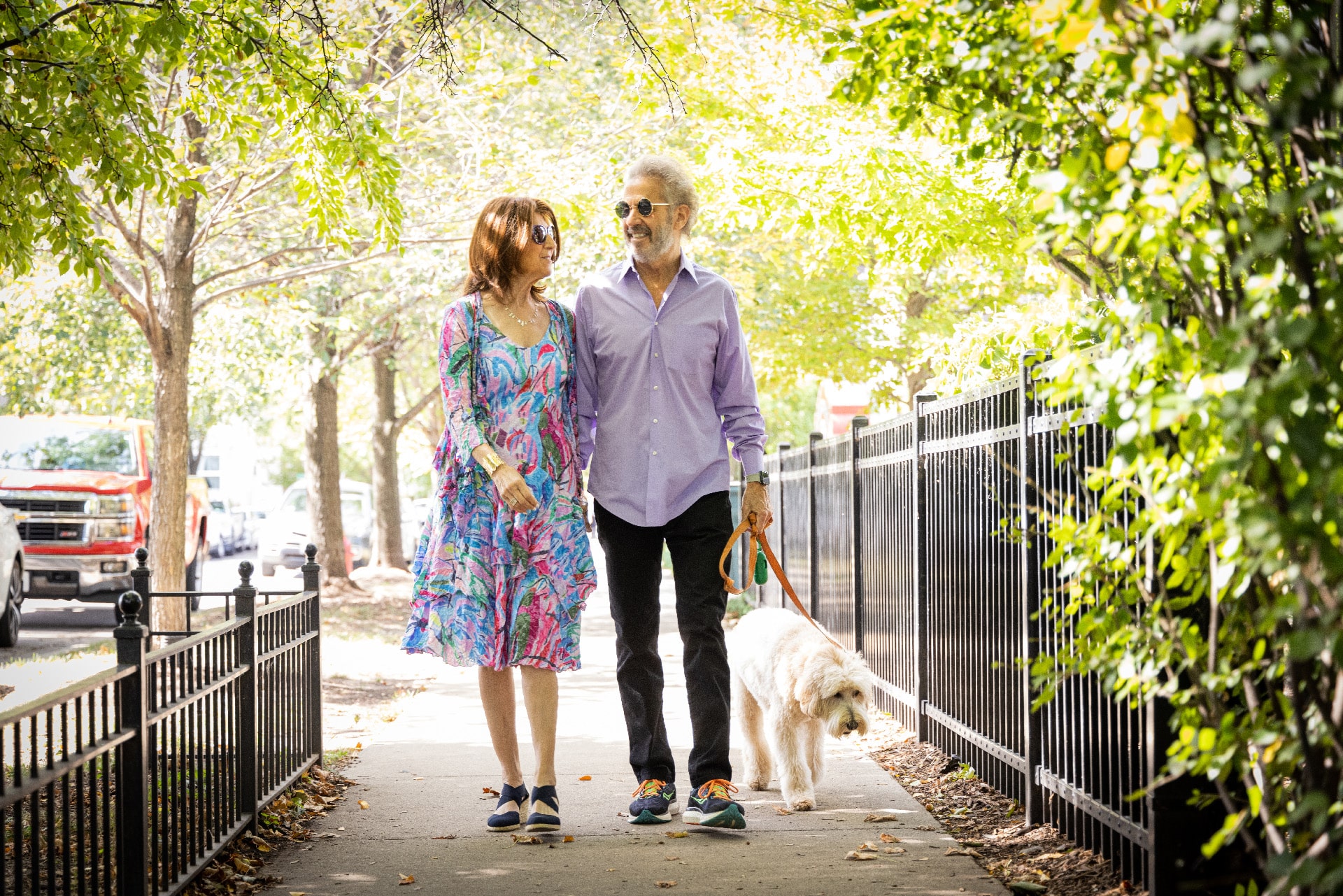Hope Forever and a Day

For more than 23 years, Marla Briskman faced her lymphoma— enduring five relapses and six different treatments. What gave her hope: Incredible treatment advancements and the support of family, friends, and her husband and caregiver, Rickey.
In 1998, Marla Briskman was getting ready for Rosh Hashanah dinner at her parents’ house when she received an unexpected visit from her brother and sister-in-law. Briskman had been waiting for results from a biopsy to come back, and when she heard her brother at her door—a physician at the hospital where she underwent the biopsy—she was terrified. “Sure enough, my brother told me I had a subtype of non-Hodgkin lymphoma called mantle cell lymphoma,” says Briskman. “The moments following were devastating, and with the help of my brother, I began to think about how I would prepare for the journey ahead.”
Mantle cell lymphoma (MCL) is typically an aggressive, or fast-growing, rare form of non-Hodgkin lymphoma (NHL). Mantle cell lymphoma arises from cells originating in the “mantle zone” and accounts for roughly six percent of all NHL cases in the United States. The type of treatment selected for a patient with MCL depends on multiple factors, including the stage of disease, the age of the patient and the patient’s overall health. Mantle cell lymphoma is usually diagnosed once it has spread throughout the body, and the majority of these patients will require treatment. While MCL is considered a difficult cancer to treat, tremendous progress has been made in discovering new treatments for this disease.
Since Briskman was not yet experiencing side effects, her doctor suggested that they hold off on treatment and that they instead put her on “active surveillance,” also known as “watch and wait.” With this strategy, patients’ overall health and disease are monitored through regular checkups and various evaluating procedures, such as laboratory and imaging tests. Active treatment starts if the patient begins to develop lymphoma-related symptoms or shows signs that the disease progressed based on testing during follow-up visits.
Briskman was on “active surveillance” for four years until her doctors deemed it necessary to start treatment due to the enlargement of her lymph nodes. “I was nervous to begin treatment but trusted my doctor, so I was confident that I could face the challenges that this disease threw my way,” says Briskman. She immediately began rituximab (Rituxan®) and made it through treatments with the support of her family and friends. “My mother was with me every time, and intermittently I had my sister-in-law, friends and my soon-to-be sisters-in-law joining the visits.”
I was nervous to begin treatment, but trusted my doctor, so I was confident that I could face the challenges that this disease threw my way.
One year after completing her initial treatment, Briskman’s lymph nodes enlarged once again. Her healthcare team recommended she now start R-CHOP chemotherapy (rituximab, cyclophosphamide, doxorubicin, vincristine, and prednisone). R-CHOP is typically administered in 21- day cycles (once every 21 days) for an average of six cycles. However, the length and number of cycles can vary based on the patient’s individual disease and health status.
Before starting treatment, Briskman’s sister-in-law convinced her to go on her dream trip to the Galapagos Islands. “She really encouraged me to do something for myself before starting a grueling round of treatments,” she explains. When she returned, much to her surprise, she received the news that her lymph nodes had receded and she no longer needed to start treatment.
Unfortunately, in 2004 she felt an enlarged lymph node in her neck again, and her doctor confirmed that her MCL had relapsed and now had blastoid features—a highly aggressive feature that often has a poor outcome. Her doctor suggested that she undergo eight cycles of R-CHOP. “He said that most older patients tolerated this treatment well, so at 53, I wasn’t concerned,” says Briskman. “Sadly, that was not the case for me.” The treatment left Briskman feeling extraordinarily dizzy and eventually caused her to have vertigo. “The doctors put me in the hospital to give me fluids, but I still suffered,” says Briskman. Luckily, the treatment eventually paid off, and her lymph nodes reduced in size.
Then one night in 2005, Briskman realized she was in the throes of yet another setback in her journey. “I rested my chin on my hand and felt a gigantic lump,” she says. “I knew this could not be good.” Now her third bout with the disease, her doctor suggested radiation would be the next course of action. “They molded a mask with little holes all around it to my head and then strapped my head down to the table. I was terrified,” says Briskman. “I was thankful to have Rickey—we were dating at the time—who came running into the room to keep me calm and help me get through.”
Briskman enjoyed three years of remission until 2008, when she felt another enlarged lymph node. The doctor confirmed that her lymphoma had reared its head again. She underwent several treatments, including a stem cell transplant. “I was in the hospital for eleven days, weak, with mouth sores that precluded me from even drinking water without being in pain. I found it extremely difficult to regain my strength upon leaving,” says Briskman. “It was Rickey’s love, strength and serving me chicken noodle soup that helped get me through.”
It was Rickey’s love, strength and serving me chicken noodle soup that helped get me through.
While in remission, Briskman and Rickey decided to marry and begin their “happily ever after.” Five years later, she discovered another lump under her neck and began to take a new oral therapy available called ibrutinib (Imbruvica®). Also, in a turn of events, Rickey was diagnosed with follicular lymphoma (FL) one year after her relapse. “It was now my turn to become a caregiver,” says Briskman. “Rickey was quite panicked, but I did the best I could to reassure him, especially given my own journey with lymphoma.” Briskman made sure to reinforce and encourage him during his journey, just as he did during her diagnosis and treatment.
Fortunately, after three rounds of bendamustine (Treanda®), Rickey was in remission. He completed the treatment and then was put on a two-year maintenance regimen of rituximab to keep the lymphoma from returning. “To this day, we are so thankful that he is healthy without relapse,” says Briskman. Briskman continued to take ibrutinib, which kept her lymphoma at bay for five years. When her lymphoma returned for the sixth time, a new drug combination of lenalidomide (Revlimid®) and rituximab was available. She was placed on that combination therapy until she found out if she was eligible for a clinical trial testing the use of chimeric antigen receptor (CAR) T-cell therapy.

At the time, the CAR T-cell therapy clinical trial was mainly administered to patients with diffuse large B-cell lymphoma (DLBCL)—an aggressive form of NHL—but Briskman was hopeful it would be a viable option for her.
She had her T-cells removed and then re-infused within one month, while also in and out of the hospital negotiating pretreatment protocols, inconsistent blood pressure, weakness and pain. “It was a terrifying time, and for the first time, I felt I might not make it through,” says Briskman. “Without the support of my husband every step of the way helping me walk, shower, and even indulging my craving for cheeseburgers and malteds—I don’t know how I would have made it through.”
Now, more than three years after her CAR T-cell therapy treatment, Briskman remains in remission. “My rabbi calls me a ‘miracle,’ and I would have to agree,” says Briskman. “Thanks to my incredible healthcare team and my amazing husband, I went from the darkest moment of my life to the brightest.”
Briskman and her husband now do their part to give back to the lymphoma community by supporting LRF and participating in the Team LRF Chicago Lymphoma Walk. She hopes her story and willingness to face these hard challenges can provide hope to other lymphoma patients facing their journeys. “For anyone who feels like there is no light at the end of the tunnel,” she says, “remember that I started this journey in 1998, and it is now 2021. Now that’s hope!”

